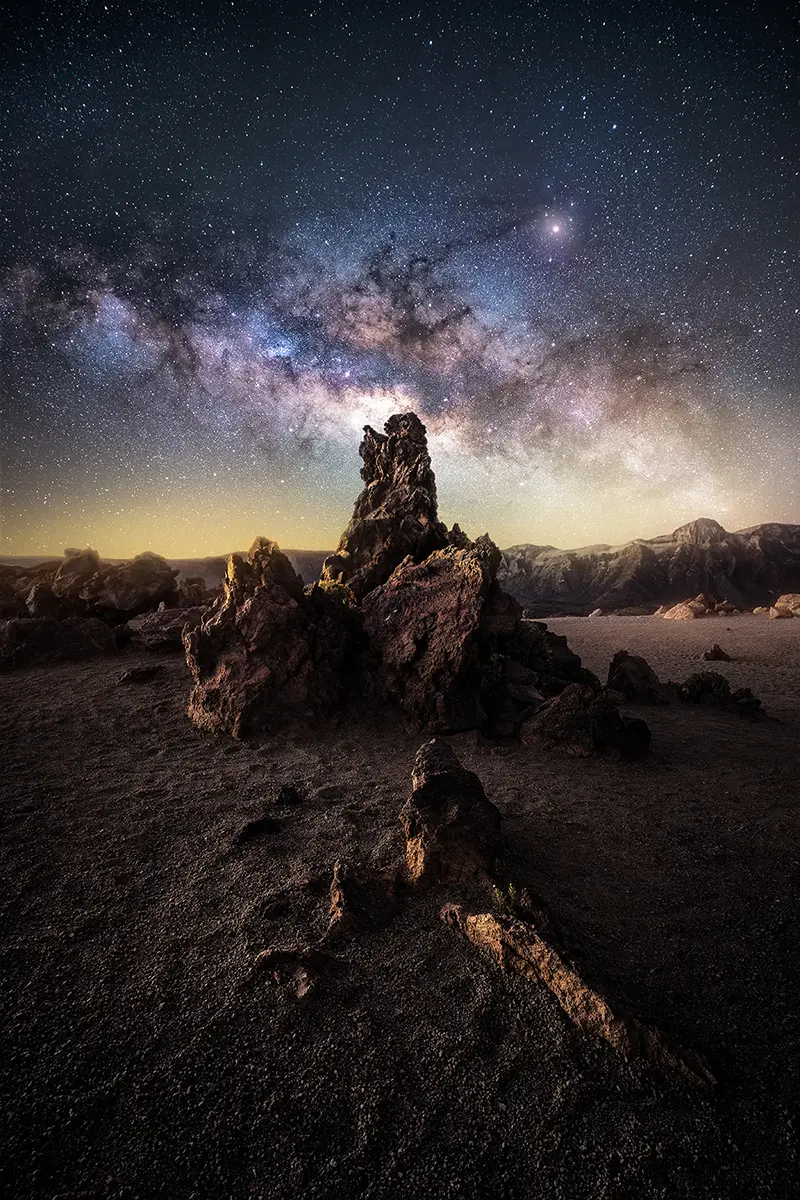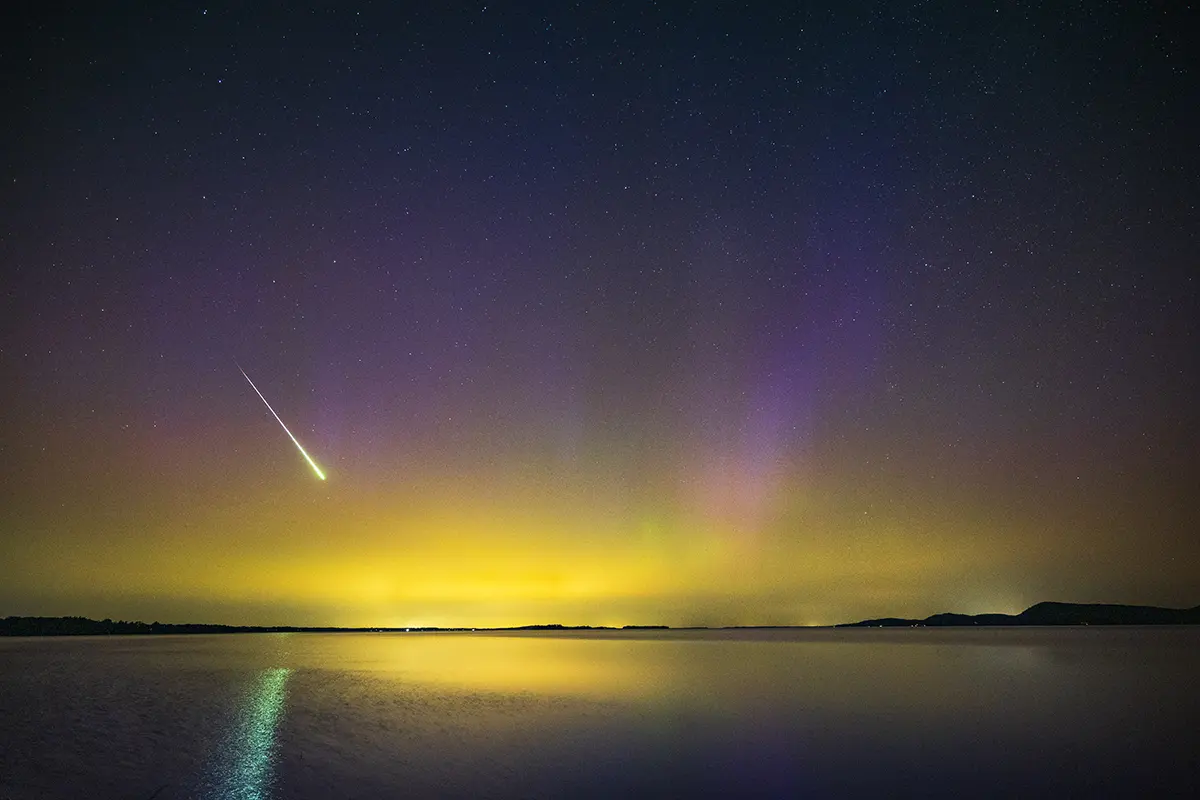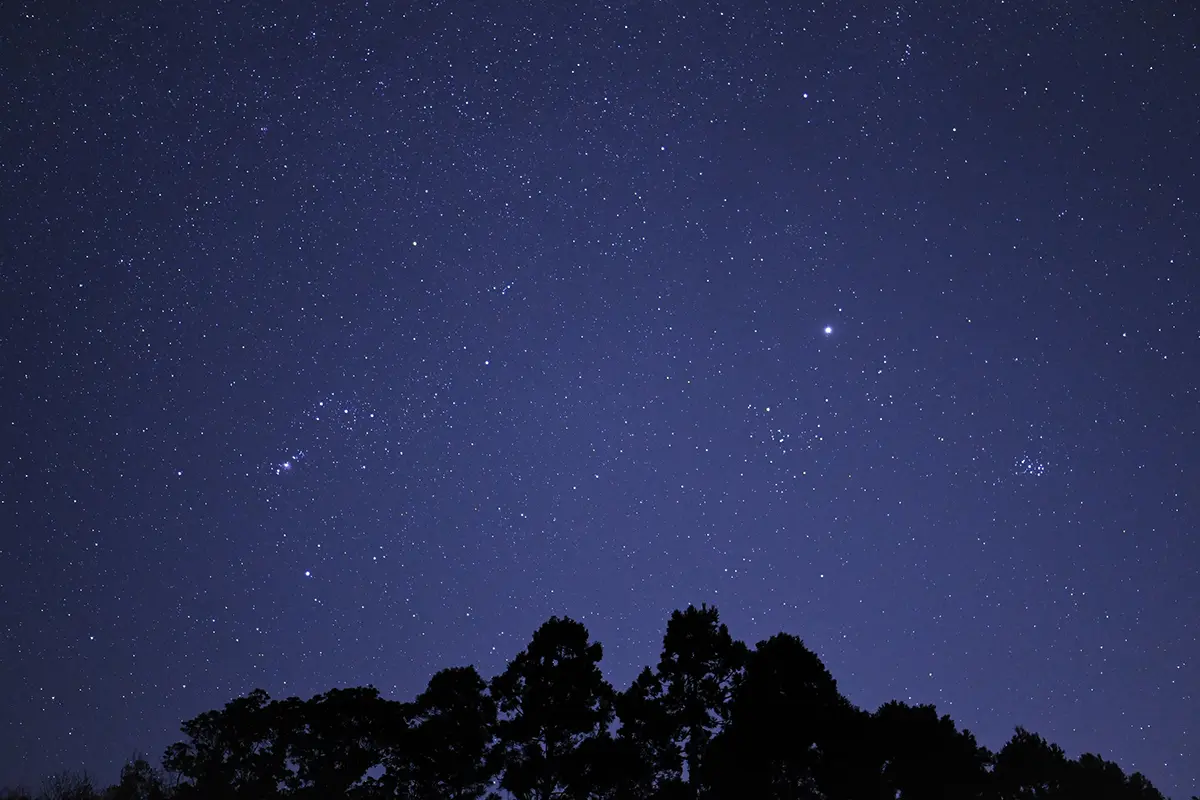Night photographers know the thrill of capturing stars, cityscapes, and moody low‑light scenes, but to truly shine, you need the right gear. In this guide, we’ll explore why fast, sharp lenses matter after dark, highlight our top picks, and share practical tips so your image of the Milky Way radiates with clarity. Whether you’re chasing a starburst or streetlight glow, this is your go‑to resource for choosing the best lens for astrophotography and low light, as well as how to reduce noise in astrophotography.
Key Takeaways:
- Fast lenses (f/2.8 or wider) are essential for night and astrophotography because they allow brighter exposures, sharper stars, and creative background blur.
- Tamron’s 11-20mm F/2.8 Di III-A RXD and 16-30mm F/2.8 Di III VXD G2 lenses are highlighted as some of the best lenses for astrophotography, delivering optical quality and performance for capturing both expansive night skies and urban low-light scenes.
- Tamron Lens Utility™ now includes the Astro Focus Lock (Astro FC-L), which automatically fixes focus at infinity for astrophotography.
- Practical tips include using sturdy tripods, manual focus, RAW shooting, and techniques like stacking and dark frame subtraction to reduce noise and enhance image clarity.
Why Fast Aperture Matters in Low Light

In night and astrophotography, light is the elusive treasure you chase. The wider your aperture (f/2.8 and below), the more starlight and ambient glow reach your camera’s sensor. This brings three key benefits:
- Brighter exposures: Faster lenses let in more light, so you can use lower ISO or faster shutter speeds — critical for freezing stars and avoiding motion blur.
- Sharper stars: Wide apertures paired with Tamron’s optical quality deliver crisp pinpoints, not soft blobs.
- Beautiful bokeh and isolation: Particularly useful for urban night portraits or street scenes with light sources.
By using an f/2.8 or faster lens, you’re already one step closer to achieving striking results.
Best Tamron Lenses for Night Photography

For astrophotographers and low-light shooters, two standout options from Tamron are the 16-30mm f/2.8 Di III VXD G2 and the 11-20mm f/2.8 Di III-A RXD. The 16-30mm G2 expands on Tamron’s acclaimed wide-angle lineup with a broader zoom range, upgraded autofocus, and a lightweight, travel-friendly build. It delivers exceptional sharpness across the frame, beautiful background blur, and reduced flare thanks to advanced coatings — making it equally powerful for Milky Way captures or cityscapes.
The compact 11-20mm, meanwhile, is the world’s first fast-aperture ultra-wide zoom for APS-C mirrorless, offering edge-to-edge clarity, quiet and precise AF, and a remarkably portable design. Together, these lenses cover everything from immersive night skies to dynamic street photography, all while maintaining the speed and precision astrophotography demands.
Why These Lenses Stand Out for Night/Astrophotography:
- Constant f/2.8 aperture across the zoom range.
- Excellent optical performance edge‑to‑
- Weather‑sealed, rugged build for outdoor use.
- Astro Focus Lock (Astro FC-L) with Tamron Lens Utility™ Mobile. This automatically locks focus at infinity to keep stars razor-sharp, prevents accidental adjustments in the dark, and makes long-exposure astrophotography more reliable.
- Available for mirrorless cameras like Sony E, Canon RF, Fujifilm X, and Nikon Z.
Long Exposure Techniques for Crisp Night Shots

Getting sharp, noise-free images after dark also requires some detailed setup. Here’s how to maximize results:
- Use a sturdy tripod: Anchor your setup. Even with VC, long exposures require rock‑steady support.
- Manual mode matters: f/2.8, ISO 800–3200, and shutter speeds from 10–30 seconds, you’ll find the sweet spot. Shoot test frames and check histograms.
- Manual focus tips: Autofocus fails under starlight. Switch to manual, zoom in on live view, and focus on a bright star or distant light.
- Delay or remote release: Prevent camera shake by using a two‑second timer or remote shutter release.
- Shoot in RAW: Preserve data during post-processing, which eases efforts to combat noise.
Astrophotography‑Specific Settings for Clarity

Capturing the Milky Way in all its glory means optimizing every detail:
- ISO: Set between 1600–3200. Enough to brighten stars without overwhelming noise.
- Aperture: Wide open on f/2.8. Helps you hit 15–20 second exposures for pinpoint stars.
- Shutter speed: Use the 500 rule as a guide — 500 divided by focal length (full‑frame equivalent). For 16mm, that’s ~32 seconds max. Shorter exposures mean sharper star dots.
- White balance: Shoot in RAW and adjust later. Don’t rely on camera presets in the dark.
- Dark frame subtraction: Many cameras support this. The result? Cleaner, reduced‑noise images.
- Stacking: For ultra‑clean Milky Way shots, shoot multiple frames and stack them in software. This dramatically reduces noise and reveals subtle, faint stars.
How to Reduce Noise in Astrophotography
Noise can ruin a perfect star shot, but by combining smart techniques and gear, you can tame it:
- Start with ISO 800–3200: Enough for exposure but not so high that noise explodes.
- Use Tamron’s VC and sturdy support: Reduces shake, letting you stick with lower ISO.
- Shoot RAW and enable dark frames: Helps your software differentiate star data from sensor noise.
- Stack for better signal-to-noise ratio: Combine multiple exposures with apps like Sequator or DeepSkyStacker.
- Denoise selectively: Apply gentle noise reduction in post, focusing on dark areas and avoiding loss of star details.
Now you’ll be well‑equipped to reduce noise in astrophotography using your Tamron lens and technique.
Why Tamron Stands Out in the Dark

When the sun sets, Tamron lenses come to life. Designed with low-light photography in mind, Tamron’s lineup delivers the perfect balance of speed, sharpness, and stability. Whether you’re chasing the Milky Way across a desert sky or capturing the moody glow of an urban nightscape, Tamron lenses like the 16-30mm F2.8 and 11-20mm F2.8 give photographers the edge they need.
What sets Tamron apart is the commitment to combining fast apertures with advanced features like Tamron Lens Utility compatibility, weather sealing, and edge-to-edge image quality all without weighing you down. These lenses are built to perform in the most challenging conditions, where clarity, control, and confidence matter most.
For photographers looking for the best lens for night sky photography, the best lens for low light photography, or a dependable Milky Way photography lens, Tamron is a name they can trust to deliver stunning results — shot after shot, night after night.
Ready to Capture the Stars?
If you’re photographing the Milky Way, city lights, or intimate night scenes, start with the Tamron 16-30mm F/2.8 Di III VXD G2 (Model A064) or 11-20mm F/2.8 Di III-A RXD. Astrophotography demands dedication, but with Tamron’s powerful optics in your kit, you’ll capture sparkle, clarity, and the magic of the night sky like never before. May your next star shot be your best yet!
Learn more about Tamron lenses at an authorized Tamron dealer near you or visit the TAMRON Store.
